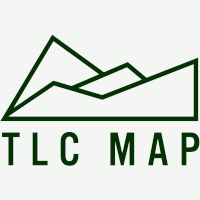TLCMap builds humanities mapping infrastructure by adding to existing systems, developing new systems where humanities researcher needs are not met and getting them to work together. Our aim is not to reproduce existing functionality, or compete, but to focus on new functionality for Humanities and Cultural Mapping that is compatible with existing systems.
Because everyone has different needs we have tried to make sure all systems can import and export data in open standard data formats of KML, GeoJSON and CSV files so you can move data to and from the systems you are interested in. Where possible, data should be able to link between platforms and websites so it all works together as a whole.
Development is always ongoing so we focus on a basic but useful prototype first, and improving and adapting to user needs. These systems may be at different stages of development.
Early development focused on:
- The Gazetteer of Historical Australian Places – a searchable gazetteer of all places in Australia, including some historical and Aboriginal and Torres Strait Islander placenames. This was the most successful activity, and has been expanded to include not just place names but layers of cultural information at all, with the ability to add any various type of information about a place (events, photographs, sites, venues, languages, etc).
- Integration with partner systems – Temporal Earth, Heurist, HuNI and Recogito. From this we learned a lot about what Humanities researchers need from humanities mapping that has been included in future development.
- Rapid prototypes of new functionality, including ‘Quick Coordinates’, mapping texts, cyclical time and spatiotemporal metrics with feedback from users and researchers. These lead to prioritisation and delivery of new functionality and ongoing development plans into the future.
Most tools have now been integrated to be seamlessly accessible within ‘TLCMap’, including:
- Gazetteer of Australian Historical Places
- Search and create layers and multilayer of cultural information
- Map timelines and journeys
- Analyse statistics related to map data, and identify clusters
- Add images to places
Coming soon:
- Automatically map texts, such as books or newspaper articles, but uploading them, and correct any erroneous results.
- Map mobility of various kinds.


